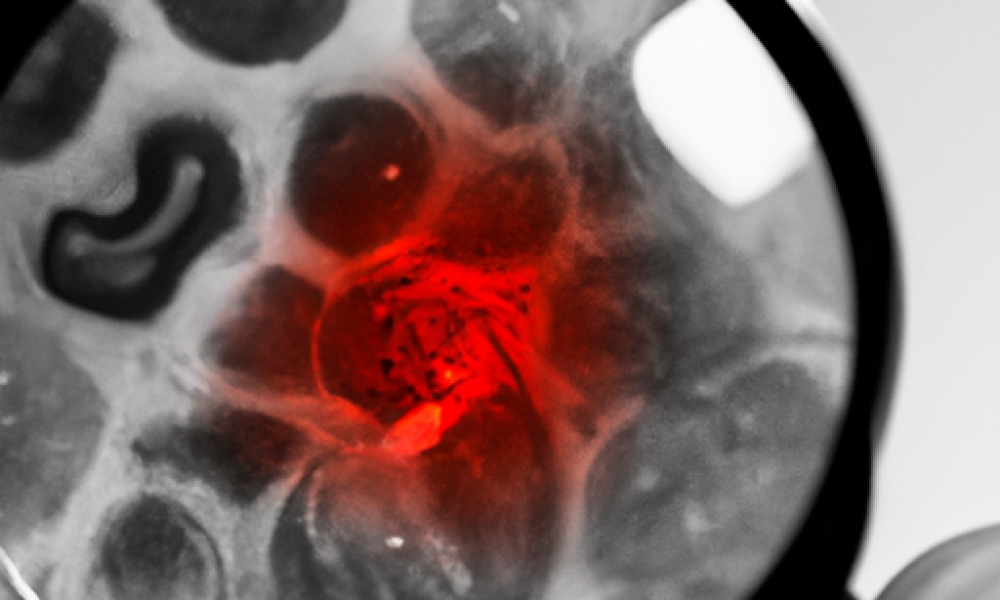Tonsillitis is a common condition that affects both children and adults, causing discomfort and pain in the throat. The inflammation of the tonsils, two small lymphoid tissues located at the back of the throat, is typically caused by bacterial or viral infections. In this article, we will delve into the causes, symptoms, and diagnosis of tonsillitis, as well as explore various treatment options and home remedies that can provide relief. Additionally, we will discuss strategies for maintaining healthy tonsils and preventing future episodes of tonsillitis. Whether you are looking for information to better understand this condition or seeking guidance on how to manage and prevent it, this article aims to provide you with comprehensive insights into tonsillitis.
1. Understanding Tonsillitis: Causes, Symptoms, and Diagnosis
Tonsillitis is a common condition that affects the tonsils, which are two small lymphoid tissues located at the back of the throat. This article aims to provide a comprehensive understanding of tonsillitis, including its causes, symptoms, and diagnosis.
Causes:
Tonsillitis can be caused by various factors. The most common cause is a viral or bacterial infection. Viruses such as the common cold virus and the Epstein-Barr virus (which causes mononucleosis) can lead to tonsillitis. Streptococcus pyogenes, a bacteria responsible for strep throat, is another common culprit. Other bacterial infections like Staphylococcus aureus or Haemophilus influenzae can also cause tonsillitis. Additionally, certain lifestyle factors like smoking, exposure to allergens, and a weakened immune system can increase the risk of developing this condition.
Symptoms:
The symptoms of tonsillitis can vary depending on the individual and the underlying cause. Common signs include a sore throat, difficulty swallowing, swollen tonsils, and tender lymph nodes in the neck. Other symptoms may include bad breath, fever, headache, earache, and fatigue. In some cases, white or yellowish patches or spots may be visible on the tonsils, indicating a bacterial infection.
Diagnosis:
To diagnose tonsillitis, a healthcare professional will begin by conducting a thorough physical examination, examining the throat and neck for any signs of inflammation or infection. They may also inquire about the patient’s medical history and symptoms. In some cases, a throat swab may be taken to determine the presence of bacteria. This involves gently swabbing the back of the throat to collect a sample, which is then sent to a laboratory for analysis. Additionally, blood tests may be performed to identify the specific virus or bacteria responsible for the infection.
It is worth noting that recurrent or chronic tonsillitis may require a more comprehensive evaluation, which may include imaging studies such as a CT scan or ultrasound. This is particularly important if tonsillectomy (surgical removal of the tonsils) is being considered as a treatment option.
In conclusion, understanding the causes, symptoms, and
You can find out more about this theme here: https://bbgate.com/media/mephedrone-synthesis.55/.
2. Treating Tonsillitis: Effective Treatment Options and Home Remedies
Treating Tonsillitis: Effective Treatment Options and Home Remedies
Tonsillitis is a common condition characterized by the inflammation of the tonsils, which are two small masses of tissue located at the back of the throat. It can cause discomfort, pain, and difficulty swallowing, making it essential to seek appropriate treatment options for relief. The treatment approach for tonsillitis depends on the severity of the symptoms, the age of the patient, and the underlying cause. In most cases, tonsillitis is caused by a viral infection, but it can also be bacterial in nature.
When it comes to treating tonsillitis, there are several effective options available. One of the primary treatment approaches is the use of antibiotics. If the cause of tonsillitis is determined to be bacterial, a course of antibiotics such as penicillin or amoxicillin may be prescribed by a healthcare professional. These medications help fight off the bacterial infection and alleviate the symptoms. It is crucial to complete the full course of antibiotics as directed, even if the symptoms improve before finishing the medication. This ensures that the infection is completely eradicated and reduces the chances of recurrence.
In cases where tonsillitis is recurrent or chronic, or if the symptoms are severe, a healthcare professional may recommend a tonsillectomy. A tonsillectomy is the surgical removal of the tonsils and is often considered in cases of frequent tonsillitis or when complications arise. This procedure is usually performed under general anesthesia and involves the complete removal of the tonsils. Although a tonsillectomy is an effective treatment option, it is typically considered a last resort after other treatment methods have been explored.
Aside from medical interventions, there are also home remedies that can provide relief from tonsillitis symptoms. These remedies can be used in conjunction with prescribed treatments or as standalone options for mild cases. Gargling with warm saltwater is a simple and effective home remedy that can help reduce throat inflammation and soothe discomfort. Drinking warm fluids like herbal teas, clear broths, or warm water with honey and lemon can also provide relief by keeping the throat hydrated and soothing irritation. Additionally, over-the-counter pain relievers,
3. Prevention and Care: How to Maintain Healthy Tonsils and Prevent Tonsillitis
Prevention and Care: How to Maintain Healthy Tonsils and Prevent Tonsillitis
Taking proactive measures to maintain healthy tonsils is essential in preventing the occurrence of tonsillitis. Here are some tips and recommendations to help you keep your tonsils healthy and reduce the risk of developing this painful condition.
1. Practice Good Oral Hygiene: Maintaining proper oral hygiene is crucial in preventing tonsillitis. Regularly brush your teeth with fluoride toothpaste and floss to remove bacteria and food particles from your mouth. Additionally, using an antiseptic mouthwash can help kill harmful bacteria that may contribute to tonsillitis.
2. Strengthen Your Immune System: A robust immune system is vital in fighting off infections, including tonsillitis. To strengthen your immune system, ensure you consume a healthy and balanced diet rich in fruits, vegetables, whole grains, and lean proteins. Regular exercise, adequate sleep, and managing stress levels also play a significant role in supporting a strong immune system.
3. Avoid Exposure to Infections: Tonsillitis is often caused by viral or bacterial infections. To reduce the risk of contracting these infections, practice good hygiene habits such as washing your hands frequently with soap and water, particularly after being in public places or touching surfaces that may harbor bacteria or viruses. Avoid close contact with individuals who have a sore throat or are experiencing symptoms of respiratory infections, as these can be sources of infection.
4. Quit Smoking and Limit Alcohol Consumption: Smoking and excessive alcohol consumption can weaken the immune system and increase the risk of developing tonsillitis. These habits also irritate the throat and can lead to chronic inflammation of the tonsils. Quitting smoking and moderating alcohol consumption can significantly contribute to maintaining healthy tonsils.
5. Stay Hydrated: Drinking an adequate amount of water is essential for maintaining overall health, including the health of your tonsils. Proper hydration helps prevent dryness and irritation in the throat, which can make you more susceptible to infections. Aim to drink at least eight glasses of water per day, and increase your fluid intake if you engage in activities that cause excessive sweating.
6. Regularly Gargle with Saltwater

